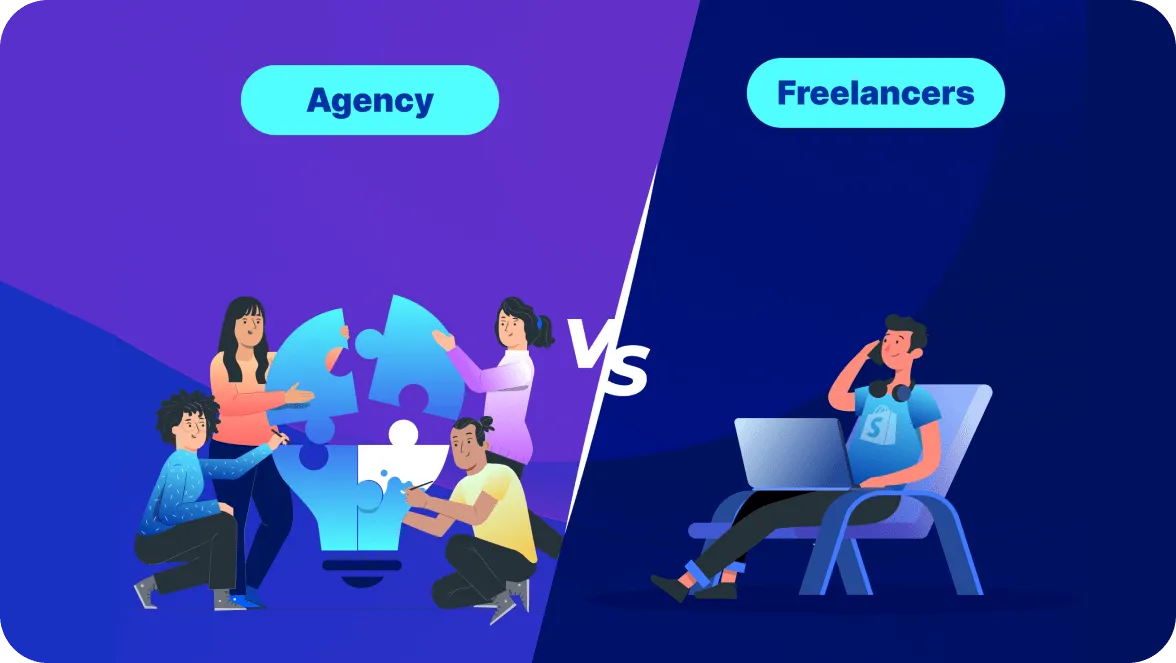
Accessibility in ecommerce isn’t just about ticking legal boxes. It’s the right thing to do and a smart business move. Accessibility means making your online store inclusive and usable for everyone. There’s no need to explain why discrimination is not okay. But on top of being empathetic, businesses with accessible stores attract more users.
European Parliament is taking measures to make accessibility a rule. Adoption of the corresponding laws plays a critical role here. One of those is the European Accessibility Act (EAA). It has been widely discussed lately due to some recent directives. In short, the act obliges companies to make digital products and services inclusive.
The EAA, implemented in April 2019, required member states to adopt national laws by June 2022. Businesses are expected to be fully compliant by June 2025. In this article, we’ll break down the new EAA, including new and existing requirements. Get ready to take notes to make your ecommerce platform inclusive and compliant with EU laws.
Importance of accessibility in ecommerce
Ecommerce businesses can view accessibility differently. For some, it’s a moral obligation. For the others, it’s a strategic business imperative. Someone can treat it as an enhancement driving more traffic and, hopefully, revenue. Or it can seem like a legal requirement to pay attention to. But actually, it’s all the above.
A large share of people experience challenges when using digital products and services. They can be permanent (e.g., visual impairments), temporary (e.g., broken arm), or situational (e.g., poor lighting). Accessibility is about recognizing that and changing for the better.
Meanwhile, ecommerce website accessibility is directly linked to user experience. Many of the principles that underpin accessible design also enhance usability for everyone. For example, clear and concise language benefits all users, not only those with disabilities. So, do logical navigation, making UI elements the right size, and ensuring proper color contrast.
And back to our main subject. There’s a growing legal and regulatory landscape around digital accessibility. Following these standards doesn’t only show your commitment to inclusivity. It also helps businesses avoid legal problems, financial losses, and reputational damage.
What if you ignore accessibility requirements? The lack of compliance comes with a list of risks:
Legal consequences. The European Accessibility Act 2025 is coming into force. Sooner or later, non-compliance will result in fines.
Loss in market share. More businesses opt to comply with accessibility standards. Those that don’t stand out negatively. Customers are choosing accessible competitors, so ignoring inclusivity will result in a loss in market share.
Reduced visibility. Yes, search engines rank accessible websites higher. A lack of inclusivity hinders rankings, making it more difficult for potential customers to find your business online. Restoring these positions takes time and effort.
Reputation losses. We can argue whether cancel culture is effective. Yet, negative word-of-mouth spreads quickly. It’ll affect your reputation; you never know how bad it gets until it’s too late.
Lost revenue. Customers who can’t access your store will simply go elsewhere. This means lost sales and potential long-term damage to your business.
Long story short, accessibility is a win-win. You can rest assured your store doesn’t break any laws. Ensuring your store complies with laws improves user experience and maintains a positive brand reputation, which boosts conversions and enhances your Shopify store's performance. Ignoring these guidelines, on the contrary, puts your business at legal and competitive risk.
Key ecommerce accessibility guidelines
So, what’s new in the European Accessibility Act 2025? And what guidelines for ecommerce does it entail? For the most part, in broadens the scope of entities that are to ensure inclusivity in their products and services. The changes for ecommerce aren’t drastic.
The document gives a clear definition of ecommerce services – “services provided at a distance, through websites and mobile device-based services by electronic means and at the individual request of a consumer with a view to concluding a consumer contract.”
The document features several accessibility obligations specific to ecommerce. As section VI of the EAA states, businesses are now required:
to provide information concerning the accessibility of the products and services being sold
to ensure the accessibility of the functionality for identification, security, and payment
provide perceivable, operable, understandable, and robust identification methods, electronic signatures, and payment services.
Hence, the EAA 2025 complements the existing EU laws on accessibility without changing them. As for the rest, the requirements remain unchanged. Let’s examine them in more detail.
Fully inclusive user flow
The full list of European Accessibility Act requirements calls for a separate article or even a few but here are some of the most important aspects:
Accessible forms. Registration and contact forms have clear labels, instructions, and error messages.
Accessible authentication. Logging in or verifying identity screens are compatible with assisting technologies. Alternatives to CAPTCHA exist.
Accessible product pages. Users can easily find and access product descriptions, prices, specifications, and availability.
Accessible purchasing process. It entails all actions: product search, adding items to the cart, and checkout. These functionalities should be usable and compatible with assistive technologies.
Accessible customer service. All service options, such as live chat, email support, and phone numbers, should be easy to find. The support staff should be trained to assist users with disabilities.
The requirements for content and information are mostly standard across business domains. In the upcoming sections of the article, we’ve summarized the essentials of the European Accessibility Act.
Perceivable information and interface
All content should be adaptable and distinguishable. It should be possible to change the way it’s presented distinguishable. Resizing and setting color contrast shouldn’t modify the information or features. For example, ensuring that text can be resized up to 200% without loss of content or functionality is critical.
It’s also necessary to make it easier for users to see and hear content. Businesses should use sufficient contrast between text and background by default. The guidelines define the range of accessible color schemes and settings. If the interface doesn’t have a voiceover feature, it should be compatible with text reader apps.
As for the media, there should be text alternatives for all non-text content. Users should be able to convert images, videos, and audio into other forms. It can be, for example, large print, braille, speech, symbols, or simpler language. Time-based media should also come with alternatives. The examples are captions for videos and transcripts for audio content.
Operable interface and navigation
All functionality should be available from a keyboard. In other words, users should be able to navigate through the store and interact with all its elements using only the keyboard inputs. Let users operate the functionality through other inputs, too. Those include touch, voice commands, and other assistive technologies.
As for the navigation itself, it should be intuitive. It should be easy for shoppers to get through the sections, find content, and determine where they are. Informative headings, clear labels, and a logical website structure allow for achieving this.
Give users enough time to read and use content. This might involve giving users options to extend time limits. Avoiding time limits altogether is the safest solution. And the most important thing. Don’t design content in a way that is known to cause seizures or physical reactions. Avoid content that flashes more than three times in any one-second period.
Understandable information and interface
Content should be readable and understandable. It’s important not to overcomplicate product descriptions, instructions, or other texts. Also, define the language of the page and any specific text passages. This will simplify accessing the text with third-party software, such as screen readers.
There are separate requirements for web pages. In particular, they should appear and operate in predictable ways. This also concerns the navigation mechanisms and visual components.
Another essential point is input assistance. Helping users avoid mistakes should be a part of the store’s logic. One such example is providing clear and specific error messages. This also includes suggestions for correcting errors and confirming successful submissions or actions.
Robust content and reliable interpretation
It’s necessary to maximize compatibility with current and future user agents. The examples of those are already mentioned assistive technologies. Shoppers may need to use screen readers, voice search, and other tools. Navigating digital products and services is impossible for some of them.
Ecommerce developers should use proper HTML and ARIA (Accessible Rich Internet Applications) markup. This allows for ensuring that content can be interpreted reliably by assistive technologies.
Accessibility statement
Finally, each online store should feature an accessibility statement. You can already find those on government resources and some other websites. This statement should detail the site’s compliance with accessibility standards. It should also list any known accessibility issues and feature contact information. Users may want to report problems or request help.
Benefits of EAA compliance for ecommerce
WHO estimates that there are at least 135 million people with disability in the European Region. According to the European Council, 27% of the EU population over the age of 16 had some form of disability. That’s one in four people. Almost one in five are unemployed. One in three are at risk of poverty or social exclusion. Half feel discriminated against. Making online shopping inclusive is the least we can do as a society.
What about those who think solely in business terms? Complying with the EU Accessibility Act is a strategic move. It’s one of those user-centric and future-ready solutions we hear about so much. It can and will significantly benefit your business. According to Forrester research, accessibility and user improvements return $100 for every $1 invested.
Better user experience
Inclusivity, by default, means improvements in the overall website usability. This entails, among other things, easy navigation, readable text, and clear visuals, which benefits all users. When your website is easy to navigate and understand, customers are more likely to have a positive user experience.
Expanding your customer base
People with disabilities represent a substantial market segment. By making your store accessible, you’re opening up your business to a whole new group of potential customers. You also get a chance to improve customer loyalty. When people feel included and valued, they’re more likely to become loyal customers. These two factors can significantly increase your market size and potential sales.
Better SEO performance
Ecommerce site accessibility practices include using proper headings, descriptive alt texts for images, and clear link texts. These are also the attributes of good SEO that improve your online store’s search engine rankings. In other words, search engines rank accessible websites higher. As a result, you can drive more organic traffic to your store.
Strengthening brand reputation
A commitment to inclusivity can enhance your brand reputation. It’ll be a statement of you valuing inclusivity and social responsibility. This can boost your brand image and attract an audience that prioritizes ethical shopping. Customers appreciate businesses that consider the needs of all users. Moreover, being an early adopter of accessibility standards can set you apart from competitors.
Long-term business sustainability
Let’s remember the pragmatic side of adopting web accessibility practices in ecommerce. Compliance with the EAA helps you avoid costly legal issues and penalties. Accessibility standards are only one of many highlights of the evolving digital environment.
There are more to come, and you’ll be better prepared to adapt. All new requirements, regardless of their origin, are meant to shape a better user experience. And this, as we all know, leads to higher satisfaction and loyalty.
Tips for achieving EAA compliance
Achieving EAA compliance can seem daunting. Yet, with the right approach and planning, it’s definitely doable. Even more than that. For most stores, the changes won’t be as numerous as one might suppose.
One exception may be a company using non-accessible color combinations in its branding. In this case, the changes will go beyond purely technical details. Thus, it makes sense to start by evaluating your brand’s color palette and color solutions. It’ll help you process the related changes in other spheres and departments.
As for the rest of the cases, there’s a list of tips that will help your team coordinate and facilitate this process:
Understand the EAA. Familiarize yourself with the specific accessibility standards and requirements. Learn what applies to your ecommerce store before taking action.
Train your team. Raise awareness about the importance of digital inclusivity. If your crew sees the bigger picture, the updates will seem less like a burden.
Conduct an audit. Your store may already be compliant with a significant share of requirements. Identify areas where it falls short of accessibility standards.
Prioritize changes. When you have a list of issues, sort them based on their impact. Create a roadmap for improvements.
Focus on key areas. Improve navigation. Work on content inclusivity. Optimize forms. Set up colors and contrast. Check compatibility with assistive technologies.
Test your store. Utilize both visual inspections and special accessibility testing tools to ensure sufficient coverage.
Test with real users. If possible, involve people with disabilities in your store upgrade. Their feedback can provide valuable insights.
Partner with experts. Consider seeking help from a company that specializes in web accessibility and Shopify development.
Remember that accessibility isn’t a one-time fix. It’s an ongoing process. Every time you update your site, make sure new content and features are inclusive. Regularly review and test your site to maintain EAA accessibility compliance. Or, instead, plan with accessibility in mind. Make it a core part of your website development and maintenance process.
With regular monitoring, audits, and an understanding of the value of accessibility, your team will easily stay up to date with new guidelines in the future. The tips above will help you set the background for changes and create an inclusive online shopping experience for everyone.
To wrap up
Ecommerce companies must ensure their stores operating in the EU are accessible by June 28, 2025. Let’s be honest: enabling this compatibility isn’t as challenging as it may seem at first. Of course, you’ll need to do some homework. It’ll be necessary to get familiar with the specific requirements and audit your website. Probably, some development will be necessary.
If the changes still seem complicated to implement or you lack the necessary expertise, delegate them to a Shopify development company. Our team, for instance, has relevant experience. We can guarantee to prepare your store for new accessibility requirements in time. Contact us to discuss your case.
Compliance with the EAA 2025 is an investment in your business’s future. The necessity to fulfill your legal obligations is non-negotiable. But look at this from a different perspective. Relying on these requirements and guidelines, you are creating a more inclusive, user-friendly, and profitable business. In the end, a user-first approach always pays off.








































Was this helpful?
0
No comments yet